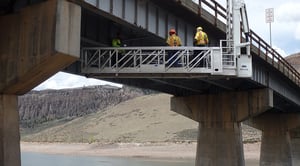Determining whether a bridge is reaching the end of its useful life is part science, part sense, part adventure.
There are more than 617,000 bridges in the United States keeping people and goods moving over water and land, through city and country. Many aging bridges are approaching the end of their useful life. According to the American Society of Civil Engineers (ASCE) 2021 Report Card, 42% of all bridges are at least 50 years old, and 46,154 or 7.5% of the nation's bridges are considered structurally deficient, meaning they are in "poor" condition.
Assessing what bridges need repairing, and when, is left to an unseen fleet of bridge inspectors — men and women who climb in and around structures to determine their condition. This day in the life features veteran SEH bridge inspectors Jason Triplett and Paul Jordan as they look, touch, and listen to bridges on several fish and wildlife refuges in North Dakota and Washington.
Sight, sound, and touch: the fundamental inspection tools
While 21st century bridge inspection procedures include everything from snooper trucks to aerial drones to ground-penetrating radar and ultrasonic testing equipment, simple visual, tactile, and auditory techniques remain the most widely used and cost-effective methods for detecting deficiencies.
According to Jason, more than 99% of inspection techniques are visual, auditory, or tactile.
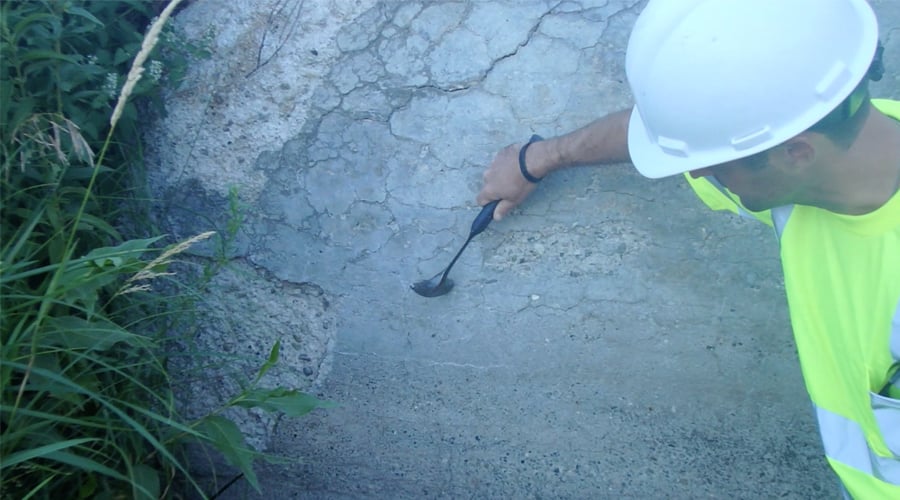
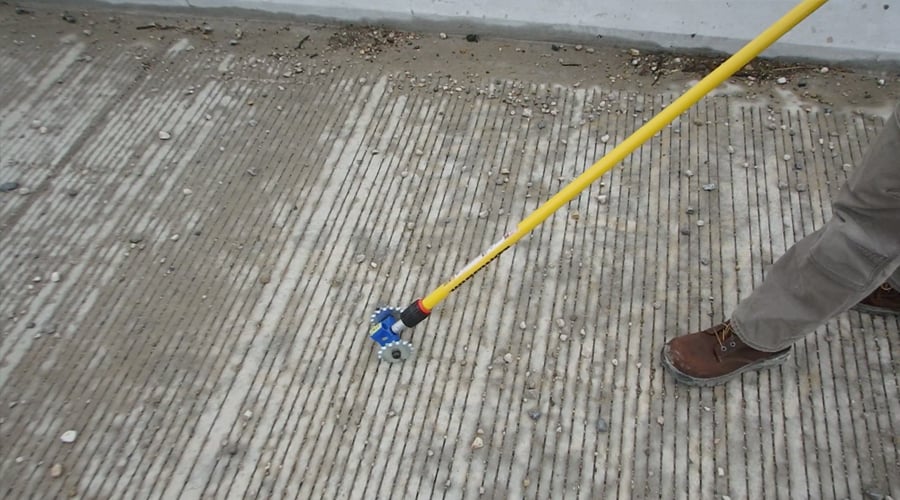
It’s called “sounding,” and Jason uses it and other tactics to determine how safe our bridges are. Problems can often be found by tapping the surface of a bridge and listening to the differences in how the tapping sounds.
“We run a rotary impact tool across the bridge surface,” he says. “The different sounds you get are very apparent.”
When the sound changes from a high-pitched clacking to a low rumbling noise, there is evidence the bridge deck may be delaminating underneath. Delamination occurs when the top layer of concrete separates from the layer below it. This separation is a pathway for moisture to attack the structure's interior, destroying it from the inside out.
A geologist hammer can also be used to sound different areas of the bridge. Inspectors listen for delamination that might not be visible to the naked eye just by looking at it.
Here, Jason uses a hammer to tap along the surface of a timber bridge, looking for spots of possible rot.
Concrete structures also relay different pitches when tapped with a hammer. Here, Jason is able to identify a specific area of a bridge wingwall that is delaminating from the inside.
How technology boosts the process
Sometimes, inspectors let technology take over. High-tech vehicles and equipment make the job easier in many circumstances.
“With steel bridges, it’s much easier to see how they’re aging,” says Jason. “As anyone with a car in the Northeast can tell you, rust is easy to spot with the naked eye, and once it gets going, it’s tough to stop.”
Gauging how much of the steel is gone due to rust is challenging. Over time, rust will create layers, so you can’t simply measure the thickness of the layers to tell how much steel is gone.
One method SEH crews use involves removing the rust layers with a wire brush to expose the bare metal. They then use a “D-Meter” to measure how much the steel remains intact.
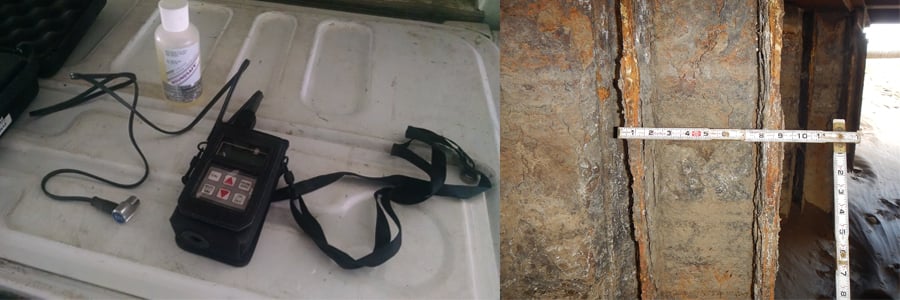
Snooper trucks allow bridge inspections from a bucket safely underneath the bridge. The articulating arm is operated by the inspector as they position it in the right location.
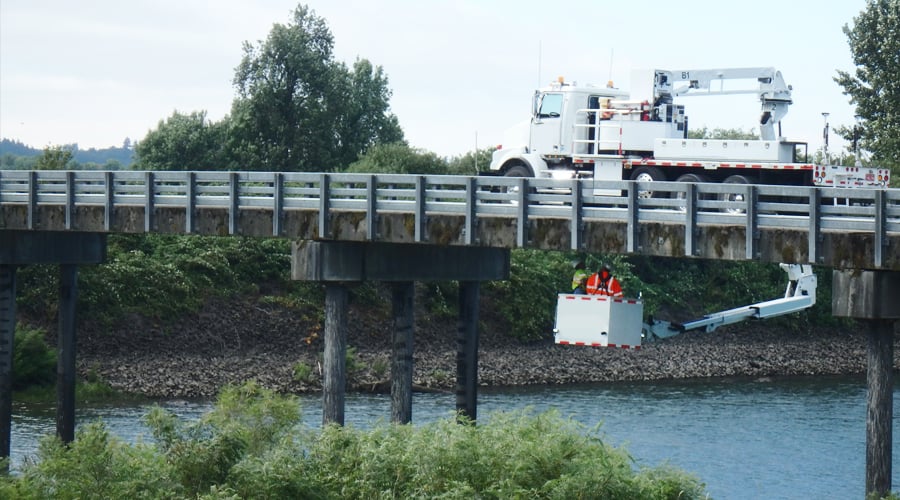
“A lot of time you have to rely on good old-fashioned technology to get the job done,” says Paul. “To perform the necessary inspection underneath a bridge, it’s just a lot easier and safer to use a snooper.”
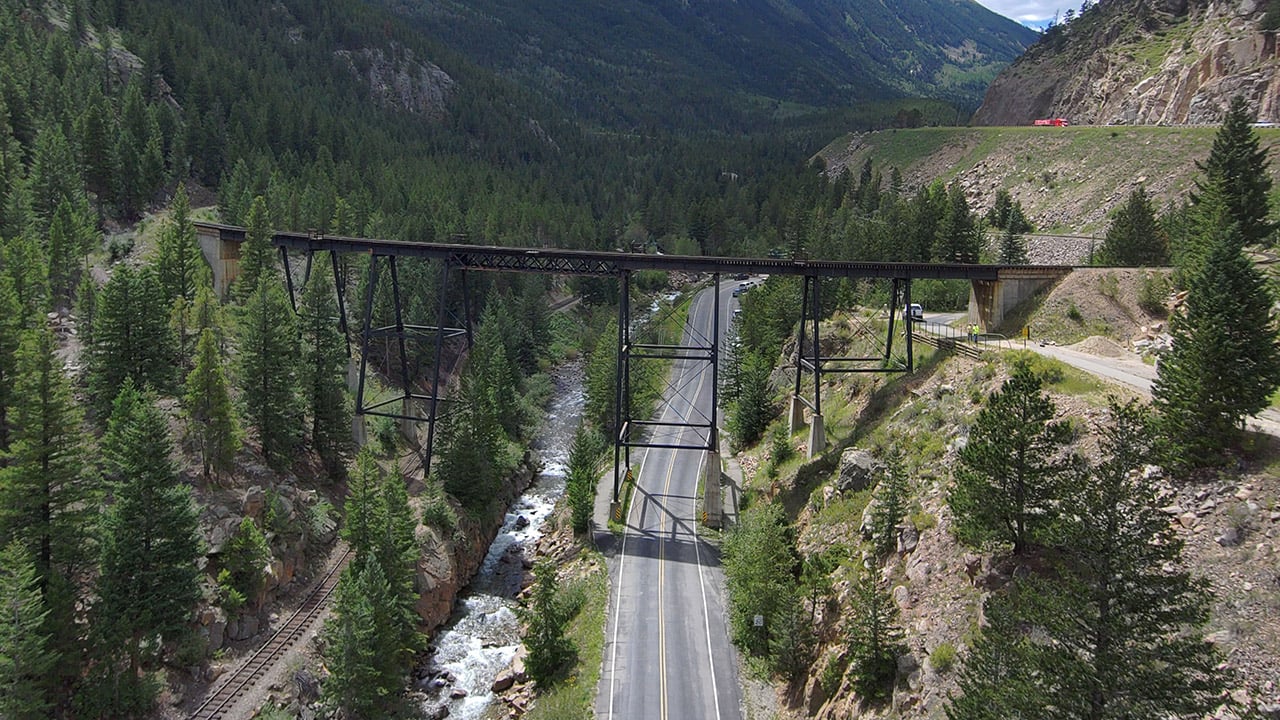
Photo taken by UAV at a recent inspection of the High Bridge located on the Georgetown Loop Railroad near Georgetown, Colorado.
Drones, also known as unmanned aerial vehicles (UAVs), are being utilized more and more to assist bridge inspectors. Bridges with hard to reach components have historically been inspected using rope access or vehicles with platforms that can reach under the bridge. Since underbridge platforms can be costly and the risks inherent in climbing can make rope access inspections hazardous, drones are used to allow inspectors to view these locations safely. While drones cannot fully replace hands-on inspection, they represent a powerful tool for inspectors in the visual inspection process.
Our inspectors use drones in inspections where other methods are cost-prohibitive or dangerous. The team consists of two members: one qualified bridge inspector and FAA licensed pilot to fly the drone, and one assistant inspector experienced in camera operation.
From water to sky: full of unexpected adventures
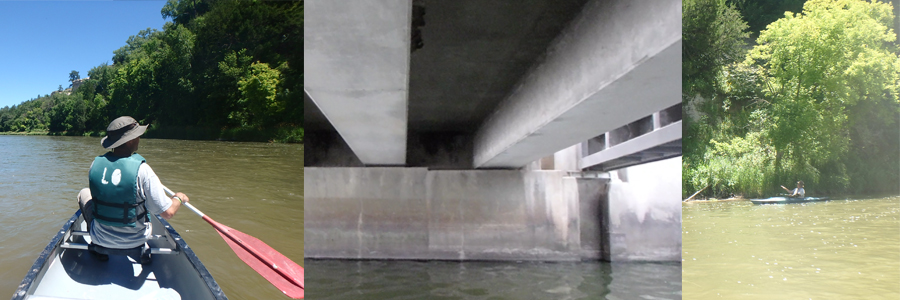
Bridge inspections often require watercraft when deep water prevents wading, and the use of snoopers is not feasible. Jason likes to use a jon boat because of its stability and portability.
Even in a boat on the water, an inspector never knows what they are going to encounter.
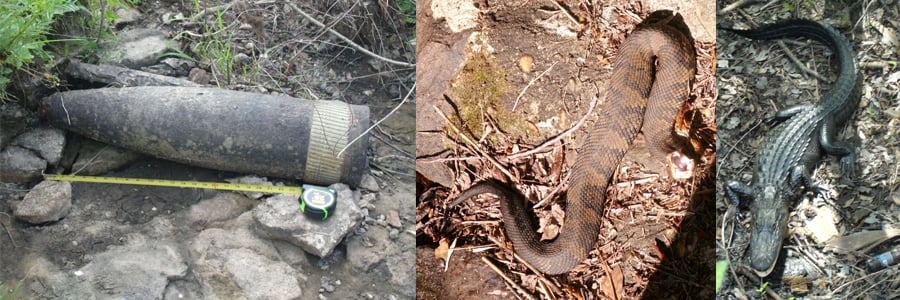
“Luckily, we were in North Dakota on these inspections, so we didn’t come across any reptiles or venomous insects during our boating excursion,” says Jason.
Though the job is not without hazards, Jason assures us that identifying possible concerns with a bridge far outweigh the potential dangers encountered out in the field.
“It’s all about connecting people and getting them from one place to another,” Jason says. “These bridges are what connect our society, and it’s important to make sure people can cross them safely.”
“It’s up to us to gather the information that tells whether a bridge needs to be repaired or replaced,” adds Paul. “It’s important that information is right, every time.”
According to Jason, gathering accurate information is the first step toward safety.
"Our infrastructure is crucial to our way of life, and many of us take for granted that our roads and bridges will always be there,” says Jason. “But the fact is that they won’t, unless we take action—I like to think that as bridge inspectors, we provide the information that is the critical first step to providing safe bridges for everyone."
About the Experts

Jason Triplett, PE, is a principal, senior structural engineer, bridge inspector, and proponent of safe passage for bridge users everywhere.

Paul Jordan, PE, is an associate, a senior professional engineer, and bridge inspector dedicated to keeping bridges safe for everyone.

.png?width=113&name=SEH_Logo_RGB%20(1).png)
